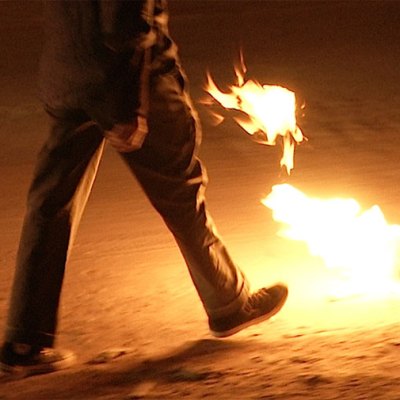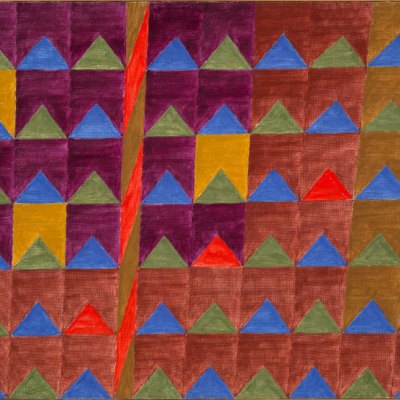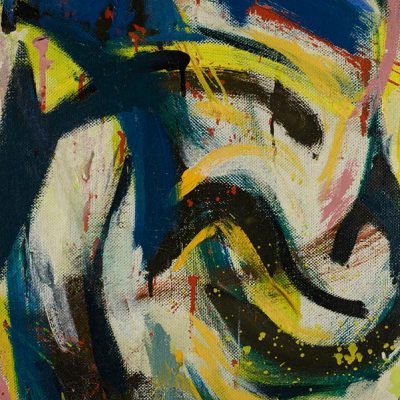Catherine Spencer speaks to Mexican artist Damián Ortega on the eve of his solo exhibition at Edinburgh’s Fruitmarket Gallery
Icebergs (2016), Damián Ortega. Installation view of ‘Damián Ortega: States of Time’ at the Fruitmarket Gallery, Edinburgh, 2016. Courtesy The Fruitmarket Gallery, Edinburgh. Photo: Ruth Clark
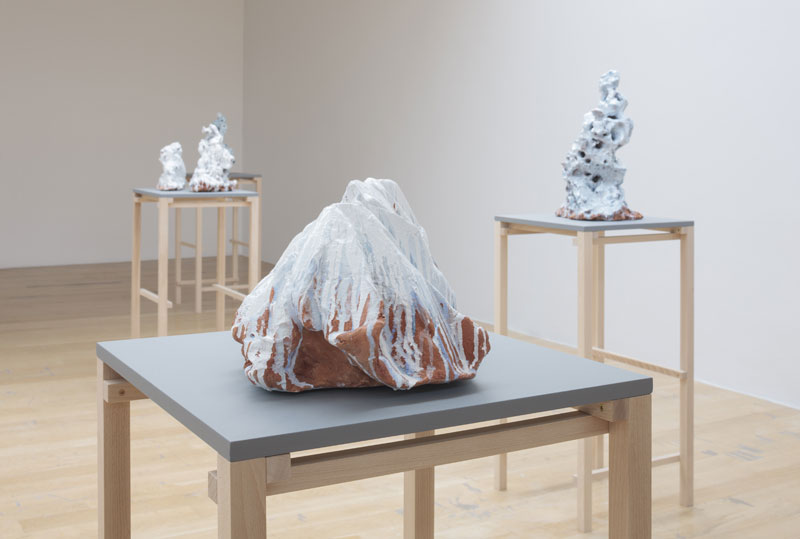
I wanted to ask how much of the work for the Fruitmarket has been planned in advance and how much of it is site-specific – but the exhibition opens tonight, and I can see you are in the middle of making a work…
Well, of course you plan ahead and think about what you want to do, but in the end the way that the space, the city, the people talk to you is always the most important thing. I came to Edinburgh about a year ago, and fell in love with it. It was very intuitive. Maybe now I’m intellectualising, but I also think it was because of how the city is layered – you can see the strata of buildings, the different historical periods. I find the incidents or accidents that happen very interesting; they give life to the exhibition. Sometimes elements are out of control, or they just come.
You’ve covered the walls of the gallery that we’re in with a drawing called Tripas de Gato, Isobaric Map; at first it made me think of Sol Lewitt, but it also brings to mind the Mexican muralists.
In Mexico we have a very deep relationship with murals and the art of the revolution, when many artists made important mural paintings, often on historic buildings. It was perhaps one of the most interesting periods of Mexican art during the 20th century. This year I’ve been thinking about murals for lots of reasons, and so I had the idea to do one here. Sol Lewitt is one of my favourite artists; he has opened windows and possibilities for other artists. But the idea behind this piece is also very silly: it is linked to a game I used to play with my daughters whenever we were waiting for something – in the car, at the doctors. We would take a piece of paper and a pencil, draw numbers on it very randomly, and then try to connect them. It also relates to the idea that when you are shifting from one place to another – something that starts easily but often becomes more and more difficult – sometimes you get lost. It can feel very dramatic, and very strange, this getting lost.
Atmospheric Pressure (2016), Damián Ortega. Installation view of ‘Damián Ortega: States of Time’ at the Fruitmarket Gallery, Edinburgh, 2016. Courtesy The Fruitmarket Gallery, Edinburgh. Photo: Ruth Clark
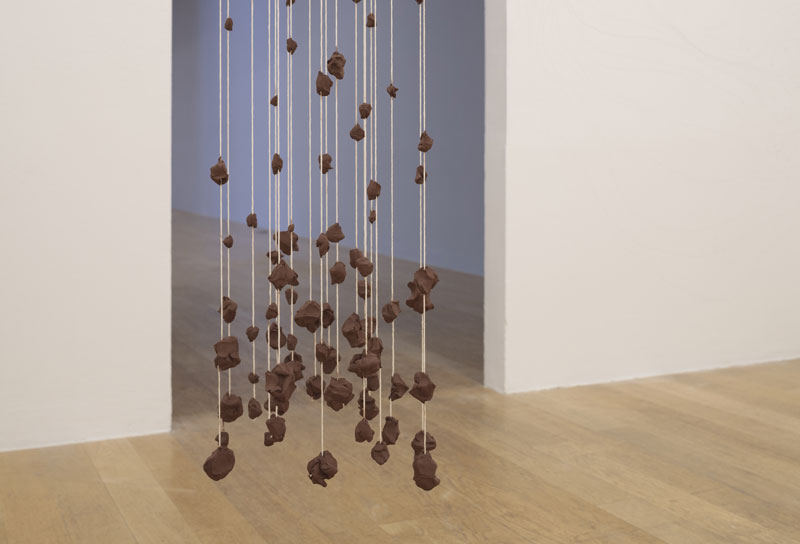
Humour and play are very important to your work. Do you have any particular hopes for how people will react to ‘States of Time’?
I like it very much when people think: ‘I can do that.’ Because you don’t need that much if you want to play – to express yourself and explore your space. All you need is a piece of paper and a pencil.
So your use of everyday materials is connected to accessibility?
Yes, it’s like clay – I had always thought it was this very academic material, but actually we use things like plates and cups every day.
Broken Sac (2016), Damián Ortega. Installation view of ‘Damián Ortega: States of Time’ at the Fruitmarket Gallery, Edinburgh, 2016. Courtesy The Fruitmarket Gallery, Edinburgh. Photo: Ruth Clark
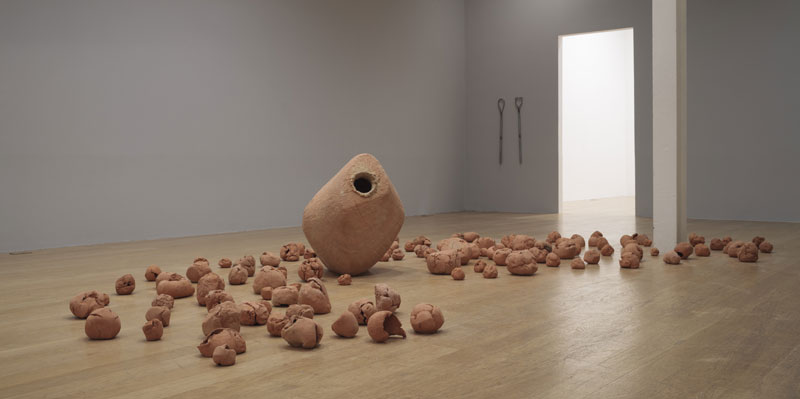
This is the first time you’ve worked with clay; a lot of it is unfired, so it looks quite delicate.
The very first time I worked with clay was in my primary school, a very experimental place where if you didn’t want to go to class, you could go to one of the studios instead; and so I spent ages in the ceramics workshop. Later, Gabriel Orozco suggested that I try working with clay. He described it as a very transparent material, in which you can find yourself. I started, but didn’t find it very ‘transparent’! After that I didn’t do anything with it for a while. But then about a year ago I had this package of clay, and started to play around with it in my studio. It was a very peaceful, joyful experience. I was by myself and didn’t have to produce anything, or consult with a technician. It was very exciting, but also a private moment, like making a drawing. The idea behind many of the works in this exhibition is to show the different states of clay, its transformation from wet, to dry, to solid. I wanted to work with all these physical and bodily experiences. I’m interested in experimenting with different materials, and provoking curiosity. I think it’s more exciting when an artist is testing and learning – more interesting for the audience. I like the idea of getting lost, but also the risk of failure.
Altocumulus (2016), Damián Ortega. Installation view of ‘Damián Ortega: States of Time’ at the Fruitmarket Gallery, Edinburgh, 2016. Courtesy The Fruitmarket Gallery, Edinburgh. Photo: Ruth Clark
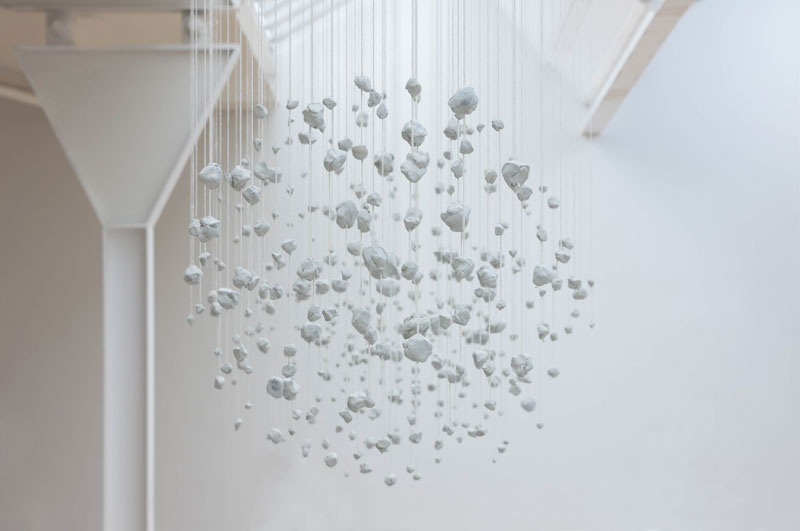
It sounds like your early education had an impact on your interest in play and process.
The school was really important. Later I realised it was highly experimental, and I had been something of a guinea pig. It was the 1960s and 1970s, and people were setting up alternative schools, because their own education had been very Catholic and conservative. So a group of parents set up this very hippie school, in a farm to the south of Mexico City. We had lots of workshops – cooking, ceramics, carpentry and mathematics. We were given the tools to work out what we needed to know in a given context, rather than just content.
Abrasive Objects in the upstairs gallery consists of lots of tools made from clay. Is this a eulogy for outmoded manual practices, or a celebration of their continued relevance in a digital age?
The piece is not just about the tools, but processes of transformation, particularly in relation to work and labour. It is also a compilation of the tools that we have in common, and that are always in our hands – like mobile phones, cameras, and knives. Tools are a bridge between humans and nature. It is a portrait of society and technology, how we need to amplify our senses and knowledge, and attempt to control everything – which has positive and negative effects.
Abrasive Objects (2016), Damián Ortega. Installation view of ‘Damián Ortega: States of Time’ at the Fruitmarket Gallery, Edinburgh, 2016. Courtesy The Fruitmarket Gallery, Edinburgh. Photo: Ruth Clark
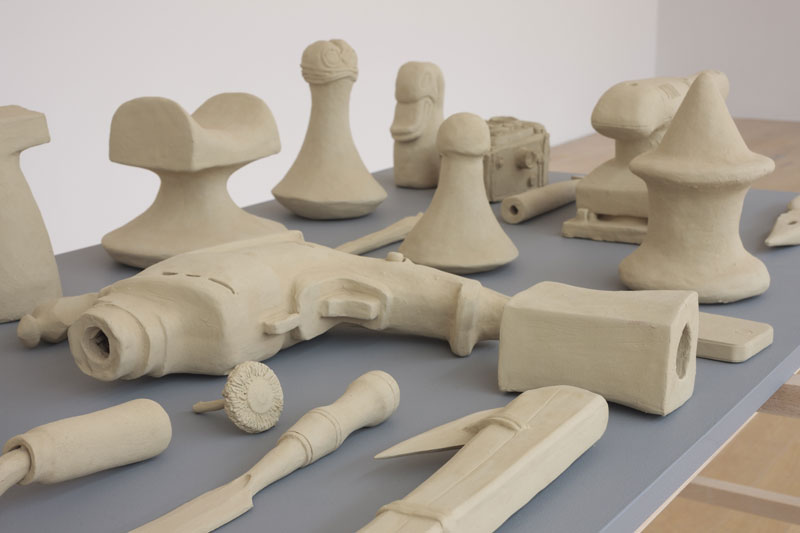
I find it interesting that the process of learning and the notion of ‘de-skilling’ – in for instance your use of everyday materials – sit side by side in your work.
I think that for the generation of artists in Mexico which I’m part of, it was very important to reject the academic idea of the artist. The ideas contained in the everyday objects around us made them far more interesting than marble or oil paint. This provided us with a way of understanding our context as a place to work – our houses, schools, streets, and neighbourhoods. Everywhere was a place we could produce our works, and which we could transform. I always try to work with the information and materials in a specific context.
‘Damián Ortega: States of Time’ is at Fruitmarket Gallery, Edinburgh, until 23 October.

